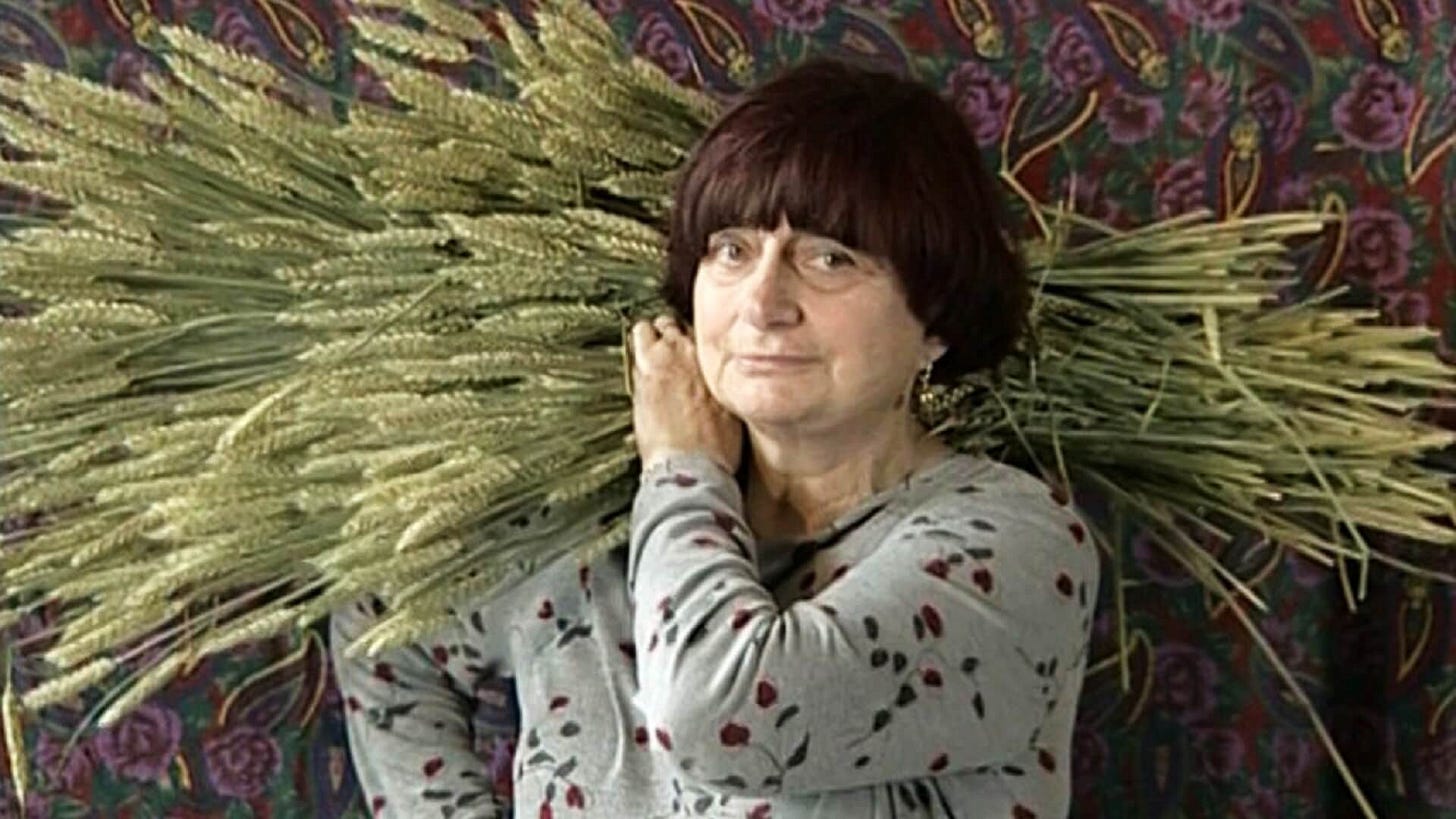'The Gleaners And I': 25 Years Later
Why Agnès Varda's 2000 documentary is considered one of the best films of all time.
Later career Agnès Varda is an acquired taste, but you’re a monster if you don’t have that taste. You’re also supposedly in the minority if you don’t think her 2000 film, The Gleaners and I, is among the best documentaries of all time. In a 2014 Sight & Sound poll of critics, curators, and academics, it was named eighth out of 56 titles listed (in a separate poll of filmmakers, it landed in a nine-way tie for 19th place). I was not one of the critics who voted for The Gleaners and I, and I still don’t agree with its ranking. More recently, in the latest Sight & Sound critics’ poll, the documentary tied with such masterpieces as The Red Shoes and Metropolis for the 67th best film of all time.
Before revisiting it, I figured the favor critics have for The Gleaners and I was due to their taste for Varda’s kooky, curious personality, the reflexivity of the filmmaking, and a general Francophilia among cineastes. I, being a monster, appreciate only the reflexivity. I also recognize the overall thematic richness of the documentary and the wondrously freewheeling approach that makes its composition seem miraculously accidental. The freshness of Varda’s digital camerawork at the time is as difficult to comprehend now, half a century later, as the significance of Direct Cinema’s mobility was after the advent of VHS camcorders in the ‘80s. They’re of a similar historical moment for nonfiction filmmaking marked by freedom, flexibility, and immediacy.
For The Gleaners and I, Varda takes the small camcorder in one hand and wanders about, spontaneously following tangents like an ADHD-driven, lived stream of consciousness. At each turn, she mostly finds subjects who stick to her focus like dust, dirt, and cat hairs to a rolling ball of duct tape. Literal gleaners scavenge fields for potatoes left over after the harvest. Squatters scrounge for food in trash piles and bins. Artists collect discarded objects for their creations. All these people are themselves the scraps of society, gleaned and captured by Varda for her own artwork. Political connotations of consumption and waste, on whatever side you’re on, make such metaphors as relevant as ever. However, the film’s ideology certainly leans to the left.
The film hints at a complicated question. If nobody threw anything away, how would these people eat or make art? The Gleaners and I celebrates practices that exist because of a social issue. Varda isn’t denying the existence of the issue, though. She’s merely reverently observing the resourcefulness of the poor and downtrodden in the face of such an issue. One of the things about the film I find most amazing is how many people Varda found who express no shame in their scrummaging. The embrace of the raw crudeness of the digital cinematography aligns with the perspective. The visuals hold up today mostly thanks to Varda’s playful eye and composition, but also because of their appropriateness to the project. I can’t refute its brilliance.
If anyone loves The Gleaners and I more than critics, it’s the viewer who shares some kinship with the onscreen outcasts and artists, or Varda’s approach to them. A devout audience is showcased in the follow-up film The Gleaners and I: Two Years Later. Varda displays fan mail — letters and gifts — and even meets a few of those who responded so favorably to the documentary, while also revisiting characters from the original. The irony is that the sequel dilutes the original by featuring redundant scenes and implying that the material in The Gleaners and I was just what was available to include at the time. This new footage could replace or supplement — although, contradictorily, little of it is as unplanned or otherwise whimsically happened upon.
The Gleaners and I was a turning point for Varda’s career as she entered her final two decades of life with more global celebrity than she’d had in years. Subsequent hit documentaries like The Beaches of Agnès and Faces Places further utilized her appeal as an on-screen personality. But never too much in the way of becoming a brand, a la Werner Herzog during the same period. This film actually has less of Varda, outside of her hands, than I’d remembered. When her cherubic face crosses the frame playfully, adorably, in a shot of a clock with no hands, even I couldn’t hold back a smile. If I had ever seen her in person (I feel like I did once, but I could be imagining it), I would’ve been starstruck. Just not so much as a fan of her movies as of her.
Keep reading with a 7-day free trial
Subscribe to Nonfics to keep reading this post and get 7 days of free access to the full post archives.


